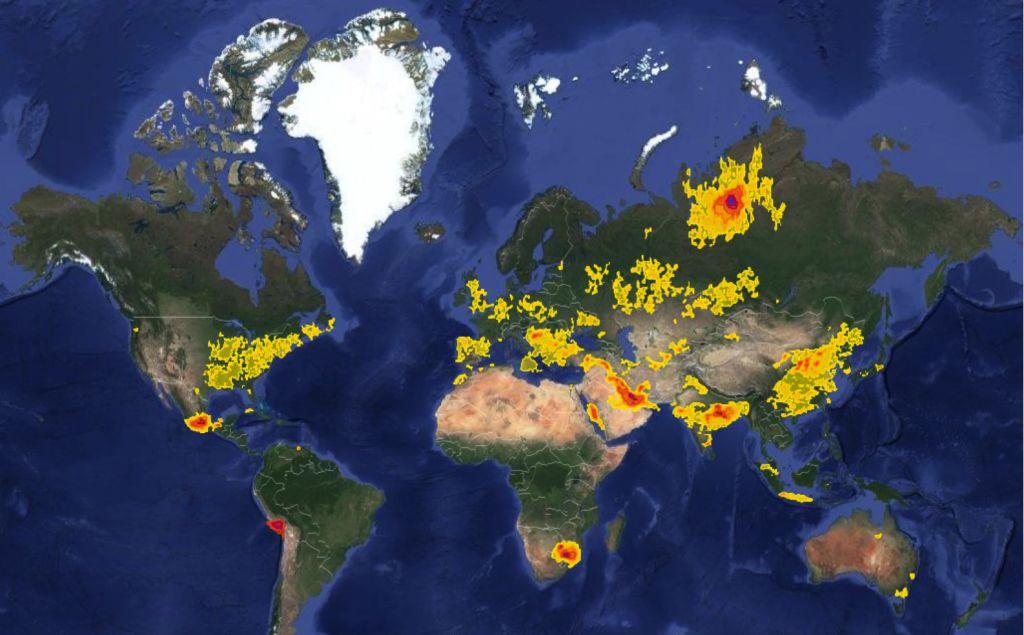Sulphur Dioxide Pollution Worldwide Map


Alex Cartwright
Senior Cartographer & GIS Specialist
Alex Cartwright is a renowned cartographer and geographic information systems specialist with over 15 years of experience in spatial analysis and data...
Geographic Analysis
What This Map Shows
The "Sulphur Dioxide Pollution Worldwide Map" provides a comprehensive visualization of sulphur dioxide (SO2) emissions across the globe. This map highlights the regions most affected by SO2 pollution, showcasing areas with high concentrations of this harmful gas, which is primarily released through industrial processes, vehicle emissions, and the burning of fossil fuels. Understanding the distribution of sulphur dioxide is crucial for addressing air quality issues and their impact on public health and the environment.
Deep Dive into Sulphur Dioxide Pollution
Sulphur dioxide is a significant atmospheric pollutant with far-reaching effects on both human health and the environment. It is primarily produced from the burning of fossil fuels like coal and oil, as well as from industrial processes such as oil refining and metal smelting. Interestingly, SO2 can also originate from natural sources, such as volcanic eruptions and the decay of organic materials.
Once released into the atmosphere, sulphur dioxide can react with water vapor and other chemicals to form acid rain, which poses a serious threat to ecosystems, agriculture, and human structures. Acid rain can lead to the acidification of lakes and streams, harming aquatic life and disrupting local ecosystems. Moreover, it can cause significant damage to buildings and monuments, especially those made of limestone and marble, as the acid reacts with the calcium carbonate in these materials.
What's fascinating is that sulphur dioxide doesn't just have environmental implications; it also affects human health. Short-term exposure can lead to respiratory issues, including bronchitis and exacerbation of asthma. According to the World Health Organization, high levels of SO2 can result in severe health complications, especially in vulnerable populations such as children and the elderly. The health risks associated with sulphur dioxide have prompted many countries to implement stricter emission regulations and monitoring systems.
Indeed, global efforts to reduce SO2 emissions have shown promising results. For instance, initiatives in the United States and Europe have led to significant decreases in sulphur dioxide levels over the past few decades. However, challenges remain, especially in rapidly industrializing regions where emissions continue to rise.
Regional Analysis
When examining the "Sulphur Dioxide Pollution Worldwide Map," distinct regional patterns emerge. For example, countries in Asia, particularly India and China, show some of the highest levels of sulphur dioxide emissions. The rapid industrial growth and reliance on coal for energy in these countries contribute significantly to their SO2 output. In contrast, many European nations have successfully reduced their emissions through stringent environmental regulations and cleaner technologies, resulting in lower concentrations of sulphur dioxide.
North America also exhibits a mixed picture. While the U.S. has made substantial progress in reducing SO2 emissions, certain areas still struggle due to legacy industries and ongoing reliance on fossil fuels. Interestingly, some regions in Africa and South America display relatively low sulphur dioxide levels, often due to lower industrial activity and a greater reliance on renewable energy sources. However, this can also be misleading, as many of these regions may lack the monitoring infrastructure to accurately assess pollution levels.
Significance and Impact
Understanding sulphur dioxide pollution is more than just an academic exercise; it has real-world implications. The effects of SO2 on climate change are increasingly being recognized, as it can influence cloud formation and, subsequently, weather patterns. Furthermore, the health impacts of sulphur dioxide pollution cannot be overstated, particularly in urban areas where traffic and industrial emissions intersect.
Recent trends indicate that while some countries are making strides in reducing their SO2 emissions, others are experiencing a rise due to increased industrial activity and lax environmental regulations. As global attention shifts towards sustainable energy solutions and climate change mitigation, addressing sulphur dioxide emissions will remain a critical focus area.
In conclusion, the "Sulphur Dioxide Pollution Worldwide Map" serves as a vital tool for understanding the distribution of this pollutant and its implications on health and the environment. By recognizing the regions most affected by sulphur dioxide, we can better strategize efforts to combat air pollution and promote public health worldwide.
Visualization Details
- Published
- October 4, 2025
- Views
- 56
Comments
Loading comments...